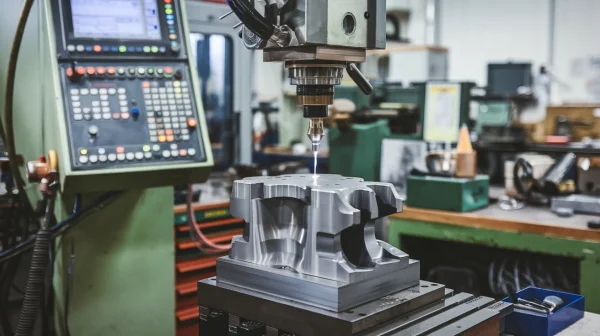In today’s world of precision engineering, the demand for manufacturing processes that can create intricate, high-tolerance parts is growing rapidly. One technology that stands out in this arena is electrical discharge machining (EDM). Known for its ability to handle complex designs and hard materials, EDM is a cornerstone of modern manufacturing, playing a critical role in industries like aerospace, automotive, and medical devices.

But what makes EDM so effective? Let’s explore how this innovative process is shaping the future of manufacturing.
What is electrical discharge machining?
EDM is a manufacturing process that uses controlled electrical discharges—tiny sparks—to shape materials. Unlike traditional machining, which involves cutting tools and physical contact, EDM removes material through electrical energy. The process works with electrically conductive materials, including hard metals that are difficult to machine with conventional methods.
The key components of EDM include:
Electrode: The tool that emits electrical discharges.
Workpiece: The material being shaped.
Dielectric Fluid: A non-conductive fluid that cools the process and flushes away debris.
When the electrode and workpiece come close without touching, a spark jumps across the gap, vaporizing small amounts of material. This process is repeated thousands of times per second to achieve precise results.
The Advantages of EDM
1. Complex Geometries Made Easy
EDM excels at creating intricate shapes, sharp corners, and fine details that would be challenging or impossible with traditional machining. Whether it’s a mold cavity with undercuts or a micro-sized medical implant, EDM delivers unparalleled precision.
2. No Tool Wear
Since there’s no physical contact between the electrode and the workpiece, tool wear is minimal. This ensures consistency across multiple parts, which is essential for industries requiring high repeatability.
3. Hard Materials? No problem.
From tungsten carbide to hardened steel, EDM can machine materials that conventional methods struggle to handle. This makes it ideal for applications like aerospace components or cutting tools that need to withstand extreme conditions.
4. High Precision, Low Stress
EDM is a non-contact process, which means there are no mechanical stress or heat-affected zones on the workpiece. The result is high-precision parts with excellent surface finishes.
Types of EDM
There are three main types of EDM, each suited to different applications:
1. Wire EDM
This method uses a thin, electrically charged wire to cut through the workpiece. It’s ideal for producing parts with tight tolerances, such as dies, moulds, and intricate metal components.
2. Sinker EDM
Also known as die-sinking or ram EDM, this technique uses a shaped electrode that “sinks” into the workpiece to create cavities. It’s commonly used for mould-making and complex geometries.
3. Hole Drilling EDM
This type is used to drill small, precise holes in hard materials. Think cooling channels in turbine blades or starter holes for wire EDM processes.
Applications of EDM in Modern Industries
1. Aerospace
In aerospace, where safety and performance are paramount, EDM is used to create turbine blades, fuel injectors, and other high-precision components. The ability to work with superalloys and achieve complex geometries makes it indispensable.
2. Medical Devices
EDM plays a critical role in producing surgical instruments, orthopaedic implants, and micro-sized components. The process’s precision and ability to work with biocompatible materials make it a go-to choice for the medical industry.
3. Tool and Die Manufacturing
From injection moulds to stamping dies, EDM is a cornerstone of toolmaking. Its ability to produce intricate cavities and hard materials ensures durability and performance in demanding applications.
Is EDM Right for Your Project?
While EDM offers numerous advantages, it’s not a one-size-fits-all solution. The process is typically slower than conventional machining and works only with electrically conductive materials. However, for projects that require extreme precision, complex geometries, or hard materials, EDM is often the best—or only—choice.
Why Choose Our EDM Services?
When it comes to electrical discharge machining, experience and expertise matter. Our team specializes in providing high-quality EDM solutions tailored to your unique needs. From prototype development to full-scale production, we deliver precision, reliability, and efficiency.
What sets us apart:
State-of-the-art EDM machines for maximum accuracy.
A wide range of materials, including titanium, carbide, and stainless steel.
Skilled technicians with years of experience in EDM processes.
Fast turnaround times to keep your projects on schedule.
Electrical Discharge Machining is more than just a manufacturing process—it’s a bridge to innovation. With its ability to handle the most challenging materials and designs, EDM continues to push the boundaries of what’s possible in modern manufacturing.
Ready to harness the power of EDM for your next project? Let’s make it happen. Contact us today to learn how our cutting-edge EDM services can bring your ideas to life.